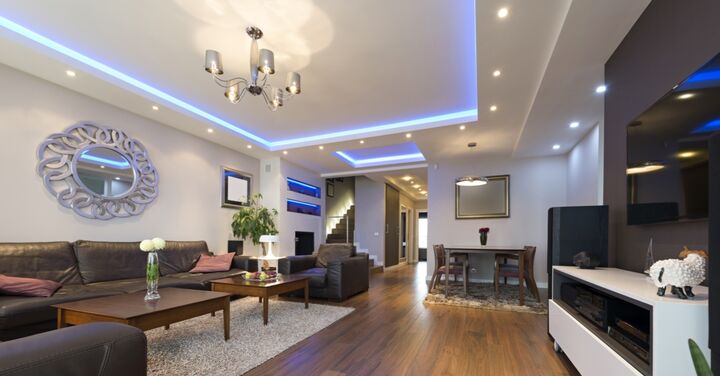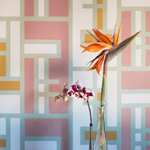
Lighting the home may be a bit complex, but it does not have to be like that. Layered lighting is important to achieve comfort, utility and beauty. Layering the light means stepping beyond the basic overhead general light and arranging the different styles of light to create a cohesive and functional lights. With the use of multiple sources of light, you can create a maximum effect in a space. For instance, ambient lighting can be combined with task lighting so that the space or room will be free of shadows. Accent lighting on the other hand creates drama and interest, you can use this to highlight your important or memorable displays, like paintings and canvas prints. Needless to say, lighting plays a very important role in the house when it comes to function and aesthetics.
Types of lighting
1. Ambient lighting – typically comes from an overhead lighting fixture such as flushmount or semi-flushmount lamp.
2. Task lighting – refers to increasing illuminance to better accomplish a specific activity.
3. Accent lighting – this type of lighting can serve mostly as decoration or can be used to create subtle or dramatic lighting effects. For instance highlighting artwork or certain architectural elements.
Tips to create layers of light in the room
1. Use multiple lights to break up large rooms. For instance, an open-plan kitchen-dining areas are considered to be multi functional and can be separated or zoned with light. In this example, homeowners may use the combination of high-output downlights over the work areas with smaller, infill downlights for more ambient light. Pendants and concealed cove lighting may be used in the dining area. The use of one color palette unifies the kitchen and dining areas.
2. Different fixtures have their own respective jobs. Downlights in the dining room for instance, take care of the ambient lighting, and the decorative light need not have the same output. Imagine all lighting features having equal outputs. You will lose the chance of highlighting a particular area in the room.
3. Carefully plan the downlights. Designs with downlights can be rich and interesting. Plan the arrangement of the downlights so that the focus of attention can be changed by increasing or lowering different lights in different areas. Take note that the grouping of lights can play an important role in creating the mood of the room. Grouping the lights together into smaller circuits can provide flexibility.
4. Use accent lighting to soften the bathroom. Bathrooms is one of the challenges in LED lighting. Color temperature is important in this aspect as it tells you how cool or warm the light appears. It is recommended to use cool white light in the morning to wake you up and make you alert. While warm light in the evening will tell you that sleep is on the way.




